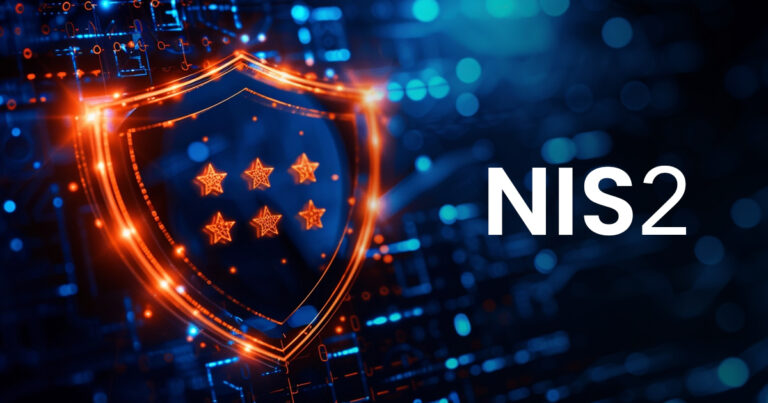What is Cloud Threat Hunting?
Cloud threat hunting is the proactive process of actively searching for cyber threats, suspicious behaviors, and hidden adversaries within cloud environments before they evolve into full-blown security breaches. Unlike automated security tools that react to known threats, cyber threat hunting combines human expertise with advanced analytics to uncover stealthy attackers, sophisticated attacks, and unknown threats that have evaded traditional detection systems.
Implementing comprehensive threat hunting in the cloud through structured threat hunting methodology and specialized cloud threat detection tools enables organizations to identify advanced persistent threats, detect lateral movement, and respond to cloud security threats before they cause significant damage.
Synonyms
- Threat Hunting
- Security Hunting
- Adversary Hunting
- Cyberthreat Hunting
- Network Threat Hunting
- Proactive Threat Hunting
- Threat Hunting in the Cloud
- Cybersecurity Threat Hunting
Why Cloud Threat Hunting Matters
Cloud environments present unique security challenges with no clear perimeter to defend, dynamic workloads, and complex architectures that create potential blind spots where adversaries can hide. Key reasons cybersecurity threat hunting is critical include:
- Cloud-Specific Attack Evolution: Cloud-conscious threat actors increased by 110% from 2022 to 2023, with adversaries developing sophisticated methods to exploit cloud features like auto-scaling, shared resources, and identity-based access that make traditional security insufficient.
- Detection Gap Coverage: Automated security tools miss sophisticated attacks that blend with normal cloud operations, requiring human threat hunter expertise to identify subtle anomalies, lateral movement patterns, and zero-day exploits through proactive investigation.
- Multi-Cloud Complexity: Organizations using multiple cloud providers face visibility gaps where critical data and suspicious activities can go unnoticed across distributed workloads, requiring specialized cloud based threat hunting capabilities addressing platform-specific security protocols.
- Early Attack Interruption: Proactive threat hunting detects adversary activity during early reconnaissance and initial access phases before attackers achieve their objectives, significantly reducing potential damage compared to reactive incident response.
Organizations without structured security threat hunting programs face extended adversary dwell times averaging months, undetected data exfiltration, and sophisticated attacks exploiting cloud-native features that automated tools cannot recognize.
How Cloud Threat Hunting Works
The threat hunting process follows a structured cyber threat hunting process methodology combining hypothesis development with data-driven investigation:
- Planning and Hypothesis Development: Threat hunter teams develop educated theories about where threats might hide based on threat intelligence, known attack patterns, suspicious indicators, and understanding of cloud environment vulnerabilities to guide investigation focus areas.
- Data Collection and Analysis: Gathering information from multiple cloud sources including security logs, network traffic, user activity patterns, system configurations, and resource access records, then analyzing collected data for irregularities indicating potential compromise.
- Threat Identification and Investigation: Using specialized threat hunting tools and techniques to search for indicators of compromise (IOCs) and indicators of attack (IOAs) including unusual login attempts, suspicious data transfers, privilege escalation attempts, and unexpected resource configuration changes.
- Threat Validation and Scoping: Confirming genuine malicious activity through forensic analysis, determining attack scope and impact, identifying compromised systems and accounts, and understanding adversary techniques and objectives.
- Response and Remediation: Taking immediate containment actions to neutralize identified threats, implementing fixes for exploited vulnerabilities, adjusting security controls based on findings, and conducting postmortem analysis to improve future threat hunting efforts.
- Continuous Refinement: Updating threat models based on discovered attacks, refining hypotheses for subsequent hunts, adapting methodologies to address evolving adversary tactics, and incorporating lessons learned into ongoing cloud threat protection strategies.
Types of Cloud Threat Hunting Applications
- Insider Threat Detection: Identifying unusual behaviors from internal users who may be abusing access privileges, exfiltrating sensitive data, or acting maliciously within cloud environments.
- Misconfiguration Discovery: Finding improperly configured cloud resources including open storage buckets, excessive permissions, default credentials, and security settings that expose sensitive data to attackers.
- Lateral Movement Identification: Uncovering adversaries navigating through cloud, multi-cloud, or hybrid infrastructures to expand their reach while evading detection systems.
- Privilege Escalation Hunting: Spotting attackers attempting to gain elevated permissions within cloud environments to access critical systems, sensitive data, or administrative functions.
Best Practices for Cloud Threat Hunting
- Prioritize Risk-Based Investigations: Focus cyber threat hunter efforts on critical assets, high-value targets, and areas with greatest potential business impact if compromised, ensuring limited resources address the most significant cloud security threats.
- Leverage Automation Intelligently: Deploy cloud threat detection platforms including Cloud-Native Application Protection Platforms (CNAPPs) and Security Information and Event Management (SIEM) systems that automate data aggregation and pattern identification, allowing threat hunters to focus on complex analysis.
- Implement Continuous Improvement: Regularly revisit and refine threat hunting methodology based on successful and unsuccessful hunts, update threat models as attack techniques evolve, and adapt approaches to address new cloud service features and configurations.
- Foster Cross-Team Collaboration: Work closely with incident response teams, cloud security analysts, and DevOps teams to integrate threat hunting insights into broader security initiatives, operational practices, and detection technique development.
- Maintain Cloud Platform Expertise: Ensure threat hunter teams possess deep understanding of cloud architectures including AWS, Azure, and Google Cloud platforms, containerized applications, microservices, and identity-based access models unique to cloud environments.
- Utilize Threat Intelligence: Integrate threat intelligence feeds providing real-time information about emerging threats, known attack methods, compromised indicators, and cloud-specific vulnerabilities to guide proactive network threat hunting activities.
- Establish Dedicated Hunting Time: Schedule regular proactive hunting sessions rather than only reacting to alerts, allowing security threat hunting teams to actively seek potential threats before they trigger automated detection systems.
Related Terms & Synonyms
- Cyberthreat Hunting: Alternative term emphasizing proactive search for cyber threats across organizational environments.
- Cybersecurity Threat Hunting: Comprehensive practice of actively searching for security threats using human expertise and advanced analytics.
- Proactive Threat Hunting: Forward-looking approach of searching for threats before they manifest as security incidents or trigger alerts.
- Adversary Hunting: Focus on tracking and identifying specific threat actors and their tactics within organizational infrastructures.
- Security Hunting: Broader term encompassing all proactive activities designed to find hidden threats and security issues.
- Network Threat Hunting: Specialized application of hunting techniques focused on identifying threats within network infrastructure and traffic.
- Threat Hunting in the Cloud: Specific practice of conducting threat hunting activities within cloud environments and platforms.
People Also Ask
1. What is threat hunting?
Threat hunting is the proactive practice of systematically searching through networks, endpoints, and cloud environments to identify malicious activities, hidden adversaries, and advanced threats that have evaded automated security controls, using hypothesis-driven investigation and human expertise.
2. What is threat hunting in cyber security?
Threat hunting in cyber security is the process where skilled analysts actively investigate environments for indicators of compromise and suspicious behaviors rather than waiting for automated alerts, combining threat intelligence, behavioral analysis, and forensic techniques to discover sophisticated attacks.
3. How can AI help with proactive threat hunting?
AI helps proactive threat hunting by automating data analysis at scale, identifying patterns and anomalies in massive datasets, accelerating routine tasks like log aggregation and parsing, and highlighting suspicious activities for human analysts to investigate while learning from past hunts to improve detection accuracy.
4. How to threat hunt?
Threat hunt by developing hypotheses about potential threats based on intelligence and risk assessments, collecting relevant data from multiple sources, analyzing information for indicators of compromise, validating findings through investigation, responding to confirmed threats, and documenting lessons learned for continuous improvement.
5. Which premise is the foundation of threat hunting?
The foundation of threat hunting is the premise that adversaries have likely already bypassed automated defenses and are operating undetected within environments, requiring proactive human-driven investigation to discover their presence rather than waiting for security tools to generate alerts.
6. What is threat hunting tools?
Threat hunting tools are specialized platforms including SIEM systems for log aggregation and correlation, CNAPPs for cloud-native security, endpoint detection and response (EDR) solutions, threat intelligence platforms, and analytics tools that help hunters collect, analyze, and visualize data to identify hidden threats.




